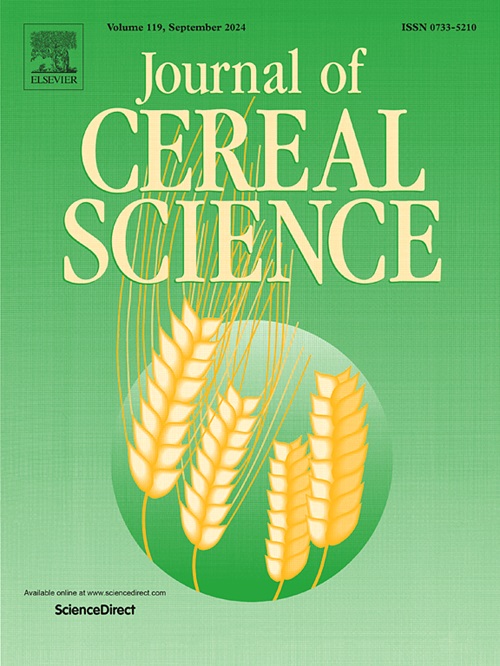Optimization of polysaccharide extraction from foxtail millet husk and characterization of its structure and antioxidant activity
IF 3.7
2区 农林科学
Q2 FOOD SCIENCE & TECHNOLOGY
引用次数: 0
Abstract
Foxtail millet is a widely cultivated cereal crop in arid regions particularly across Asia and Africa, and has been used primarily as animal feed. Recent research has mainly focused on the nutritional value and potential health benefits of millet endosperm and bran layers, while millet husks have been little investigated. This study aimed to study the extraction of polysaccharides from foxtail millet husk (FMH) and optimize the extraction yield of water-soluble (SDF) and insoluble dietary fibers (IDF). Single-factor experiments identified key parameters, including solid-to-liquid ratio, extraction time, temperature, and solvent concentration (NaOH). Response surface methodology (RSM) determined the optimal conditions for SDF extraction, which included a temperature of 82.2 °C, a time of 5.1 h, and a solid-to-liquid ratio of 1:20 (g/mL), with 3.65 % yield. For IDF extraction, the optimal conditions were a temperature of 81 °C, a solid-to-liquid ratio of 1:20 (g/mL), a time of 5.13 h and a NaOH concentration of 0.62 mol/L, with 12.4 % yield. The molecular structures and antioxidant activities of the optimally extracted polysaccharides were analyzed to explore their potential functions. FMH fibers were found to have complex molecular structures and significant antioxidant activities, suggesting their potential application as nutraceutical and functional food ingredients to improve health.

谷子壳多糖提取工艺优化、结构及抗氧化活性表征
谷子是干旱地区广泛种植的谷类作物,特别是在亚洲和非洲,主要用作动物饲料。最近的研究主要集中在谷子胚乳和谷糠层的营养价值和潜在的健康益处上,而谷子壳的研究很少。本研究旨在研究从谷子壳(FMH)中提取多糖的工艺,并优化其水溶性(SDF)和不溶性膳食纤维(IDF)的提取率。单因素实验确定了关键参数,包括料液比、提取时间、温度和溶剂浓度(NaOH)。响应面法(RSM)确定了提取SDF的最佳工艺条件:温度为82.2℃,时间为5.1 h,料液比为1:20 (g/mL),得率为3.65%。提取IDF的最佳条件为:温度81℃,料液比1:20 (g/mL),提取时间5.13 h, NaOH浓度0.62 mol/L,得率12.4%。对优选多糖的分子结构和抗氧化活性进行分析,探讨其潜在功能。FMH纤维具有复杂的分子结构和显著的抗氧化活性,在营养保健和功能性食品配料方面具有潜在的应用前景。
本文章由计算机程序翻译,如有差异,请以英文原文为准。
求助全文
约1分钟内获得全文
求助全文
来源期刊

Journal of Cereal Science
工程技术-食品科技
CiteScore
7.80
自引率
2.60%
发文量
163
审稿时长
38 days
期刊介绍:
The Journal of Cereal Science was established in 1983 to provide an International forum for the publication of original research papers of high standing covering all aspects of cereal science related to the functional and nutritional quality of cereal grains (true cereals - members of the Poaceae family and starchy pseudocereals - members of the Amaranthaceae, Chenopodiaceae and Polygonaceae families) and their products, in relation to the cereals used. The journal also publishes concise and critical review articles appraising the status and future directions of specific areas of cereal science and short communications that present news of important advances in research. The journal aims at topicality and at providing comprehensive coverage of progress in the field.
 求助内容:
求助内容: 应助结果提醒方式:
应助结果提醒方式:


